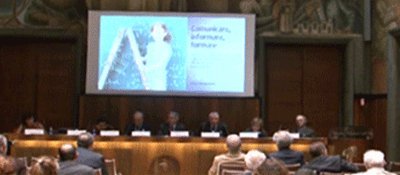Beyond the three cultures: the S&TDL proposal

National Research Council
Rome, 14-15 October 2015
In 1995, John Brockman started speaking about a third culture able to go beyond the dichotomy between the two cultures – namely the sciences and the humanities – described by Snow (1959), and to enlarge the perspective. The third culture was “the one of those scientists who can tell new and interesting things about the world and ourselves: who can tell them to a wide audience, spreading knowledge beyond the borders of the academia”.
The literary intellectuals from the past passed the baton to scientists, who became the transmission belt between science and society: “public thinkers”, that can explain the nature and value of their job, the meaning and impact of their research and discoveries, that can provide answers, explanations, resolutions.
In 2009, however, Jerome Kagan – a well-known American psychologist – declared the final overrun of Snow’s contrast with his book The three cultures. First of all, Kagan confirmed that a third culture exists, well connoted with respect both to the literary and humanities cultures, and to the scientific and technological ones, and that it comprises the composite area of social sciences: from sociology to anthropology, from political science to economics to psychology… Kagan then studied the peculiarities of the three cultures: scope of the investigations, e.g. natural sciences, social sciences and the humanities; the corresponding research communities, e.g. natural scientists, social science scientists and humanists.
The differences refer to fundamental questions and assumptions, key issues, sources of evidence, approaches, languages, formae mentis and behaviours, missions, strong and weak points, contributions and limitations of each culture and of each kind of scholars.
Finally, the author suggested a possible scenario for the future, that goes beyond mutual misunderstanding and tensions dividing the three spheres: in fact, “it is time for the members of all three cultures to adopt a posture of greater humility and to recognize that, like tigers, sharks, and hawks, each is potent in its own territory but impotent in the territory of the other”.
According to Kagan, a better balance, an increased sensitivity and openness to dialogue can favour the establishment of a collaboration and debate place among different fields “where to weave the separate thread of scientific events in a coherent tapestry”.
The inspiring idea of the Conference came from these premises: to propose the S&TDL infrastructure as a way to overcome each single culture, its particular interests and viewpoints, and scientific-disciplinary, linguistic and cultural peculiarities.
A common, dynamic and open space able to encourage positively the dialogue among the different scientific and cultural areas, and between these and society in its variations.
A real collaborative, multiple, integrated knowledge ecosystem, that is able to demolish barriers, to defeat stereotypes and prejudices, to give value to everyone contribution, to create and multiply significant relationships and fruitful exchanges.
The two-days conference offered the occasion to present the S&TDL infrastructure, and to promote its evolution according to openness, flexibility and integration principles.
The first day (14th October, afternoon), moderated by Marco Ferrazzoli, CNR press-office manager, was focused on institutional aspects and drew the S&TDL strategic landscape and its long-term perspective.
The second day (15th October, morning and afternoon) was focused on technical and scientific aspects of the S&TDL, and reviewed the variety of implementations and project results, leaving ample space to project partners and to the diversity of their proposals and approaches.


